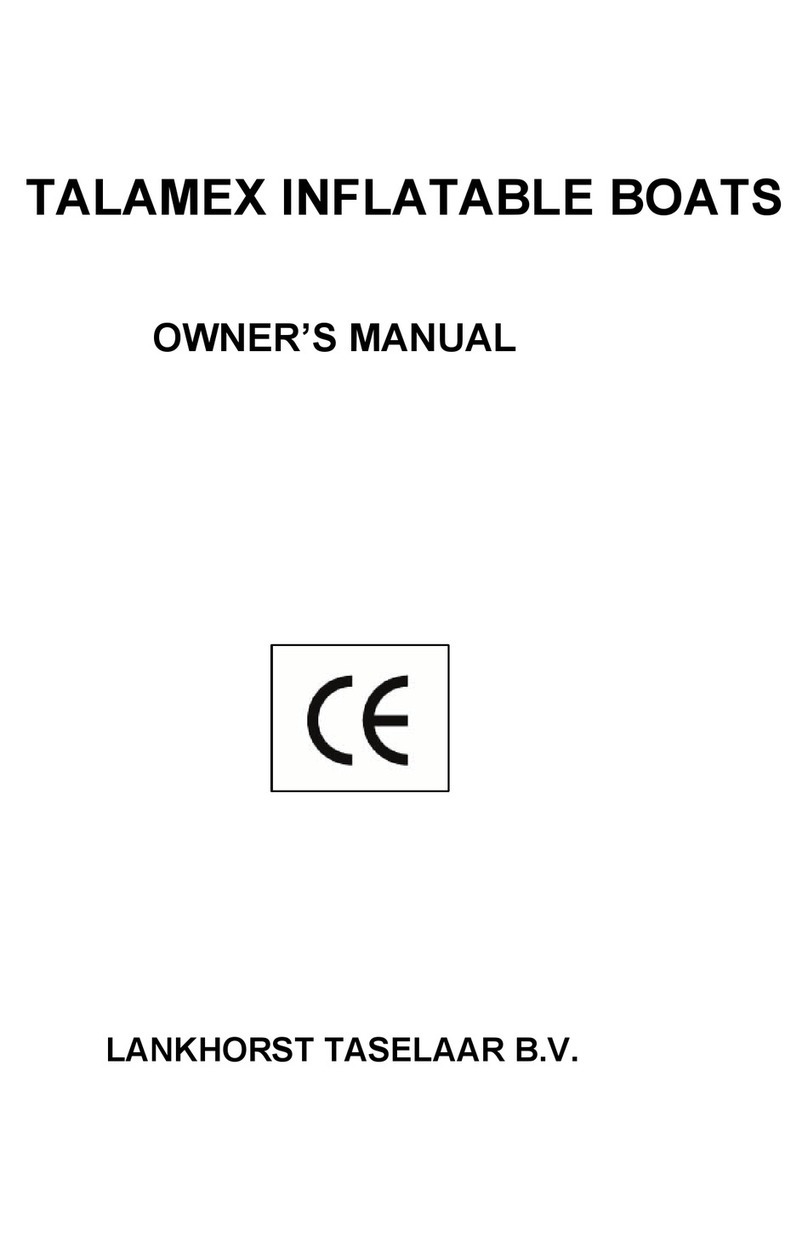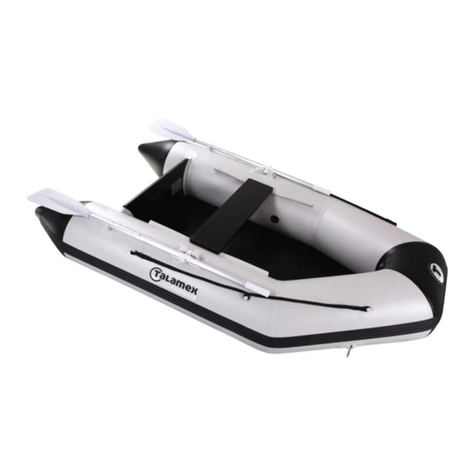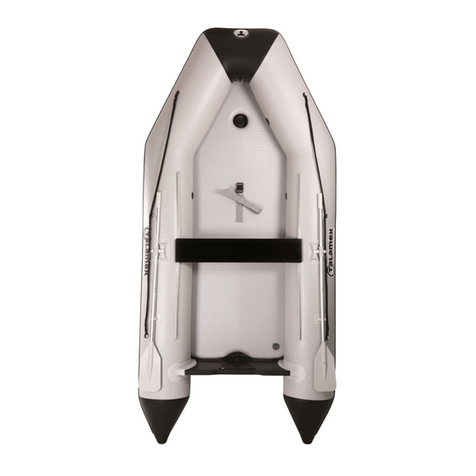1.3 Capacity plate
The manufacturer's capacity plate is located on the
inside of the boat transom. Never exceed the
maximum values as mentioned on the plate.
1.4 National legislation
Before you prepare for the water with your Talamex
inflatable boat, check the local legislation on any
restrictions on the specific water you want to use.
You might check for sailing restrictions, speed-
restriction, restrictions on the use of outboard
engines, restrictions on the airborne sounds, etc.
1.5 General safety information
In order to safely enjoy the waterways, familiarize
yourself with local and other governmental boating
regulations and restrictions, and consider the
following suggestions.
Use flotation devices. Have an approved personal
flotation device of suitable size for each person
aboard (it is the law) and have it readily accessible.
Do not overload your boat. Most boats are rated and
certified for maximum load (weight) capacities (refer
to your boat capacity plate). If in doubt, contact your
dealer.
Perform safety checks and required maintenance.
Follow a regular schedule and ensure that all repairs
are properly made.
Know and obey all nautical rules and laws of the
waterways.
Make sure everyone in the boat is properly seated.
Do not allow anyone to sit or ride on any part of the
boat that was not intended for such use.
This includes any part of your boat, at which an
unexpected acceleration, sudden stopping,
unexpected loss of boat control, or sudden boat
movement could cause a person to be thrown
overboard or into the boat.
Never be under the influence of alcohol or drugs
while boating (it is the law). Alcohol or drug use
impairs your judgment and greatly reduces your
ability to react quickly.
Prepare other boat operators. Instruct at least one
other person on board in the basics of starting and
operating the outboard, and boat handling, in case the
driver becomes disabled or falls overboard.
Stop the engine whenever passengers are boarding,
unloading, or are near the back (stern) of the boat.
Just shifting the outboard into neutral is not
sufficient.
Be alert. The operator of the boat is responsible by
law to maintain a proper lookout by sight and
hearing. The operator must have an unobstructed
view particularly to the front. No passengers, load, or
fishing seats should block the operators view when
operating the boat above idle speed.
Never drive your boat directly behind a water skier in
case the skier falls. Watch fallen skiers. When using
your boat for water skiing or similar activities,
always keep a fallen or down skier on the operator's
side of the boat while returning to assist the skier.
The operator should always have the down skier in
sight and never back up to the skier or anyone in the
water.
2. Specifications, description and features
2.1 Specifications
Declaration of conformity: The Talamex inflatable
boats smaller than 2,50 meter, do not come under the
aegis of the recreational Craft Directive 2013/53/EC
and therefore cannot be certified as complying with
it. However, these models are built to meet all
specifications required in the above-mentioned
Directive as well as the ISO 6185 standards.
2.2 Boat model
This is an inflatable boat that gets its form, strength
and buoyancy by means of inflation with air. The
boat is designed for small voyages in sheltered and
open waters, depending on the design category (see
2.9).































